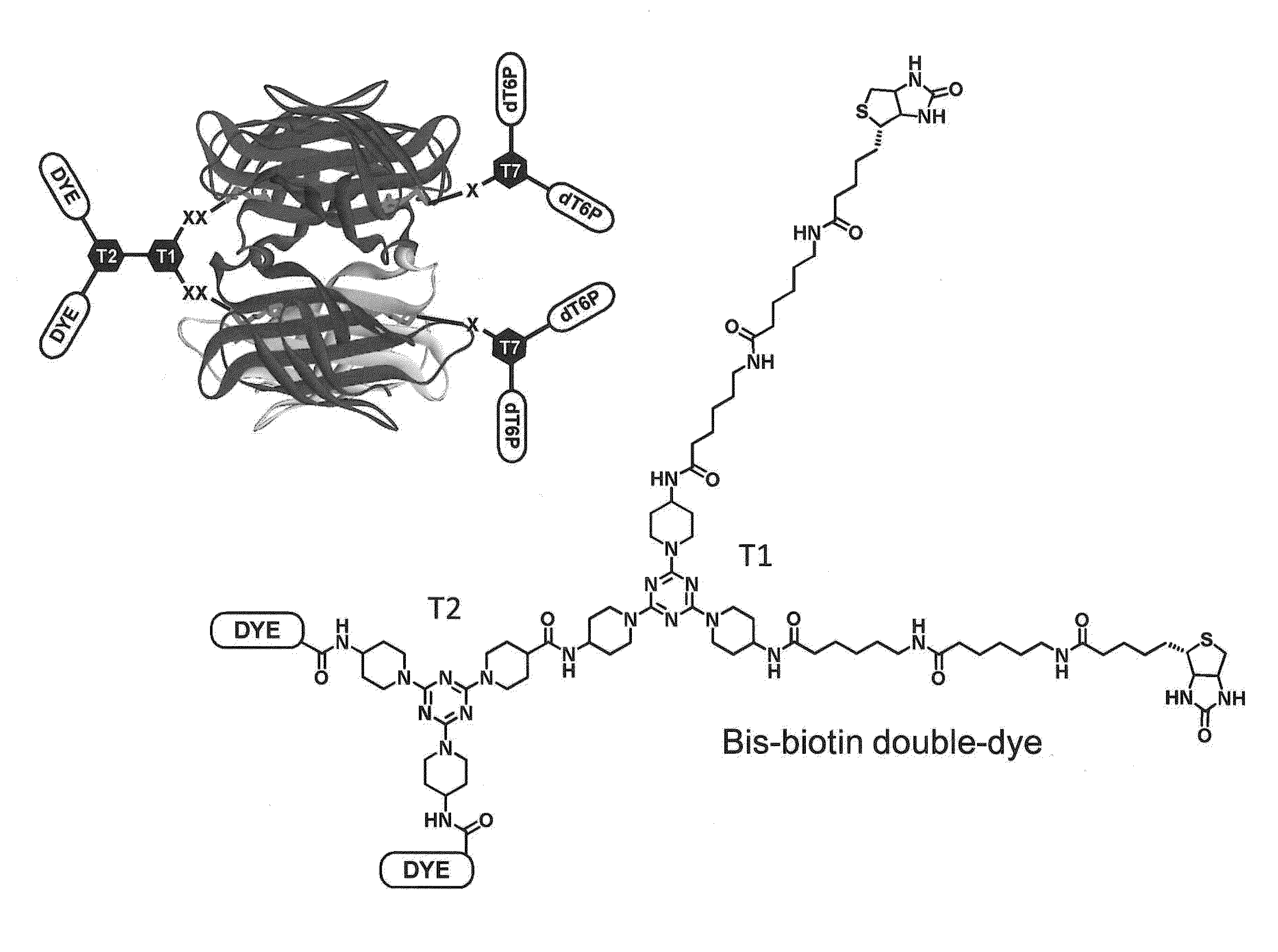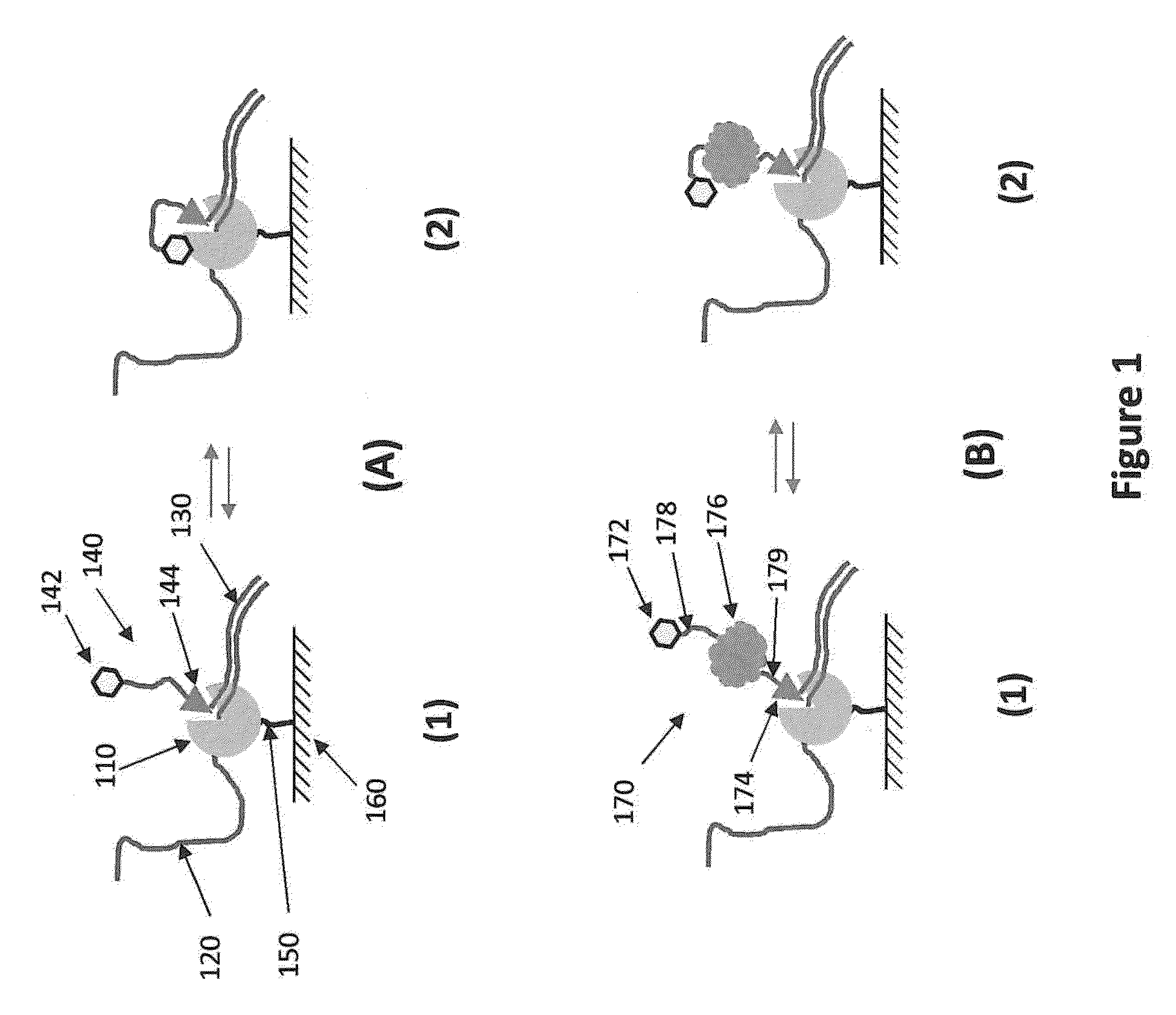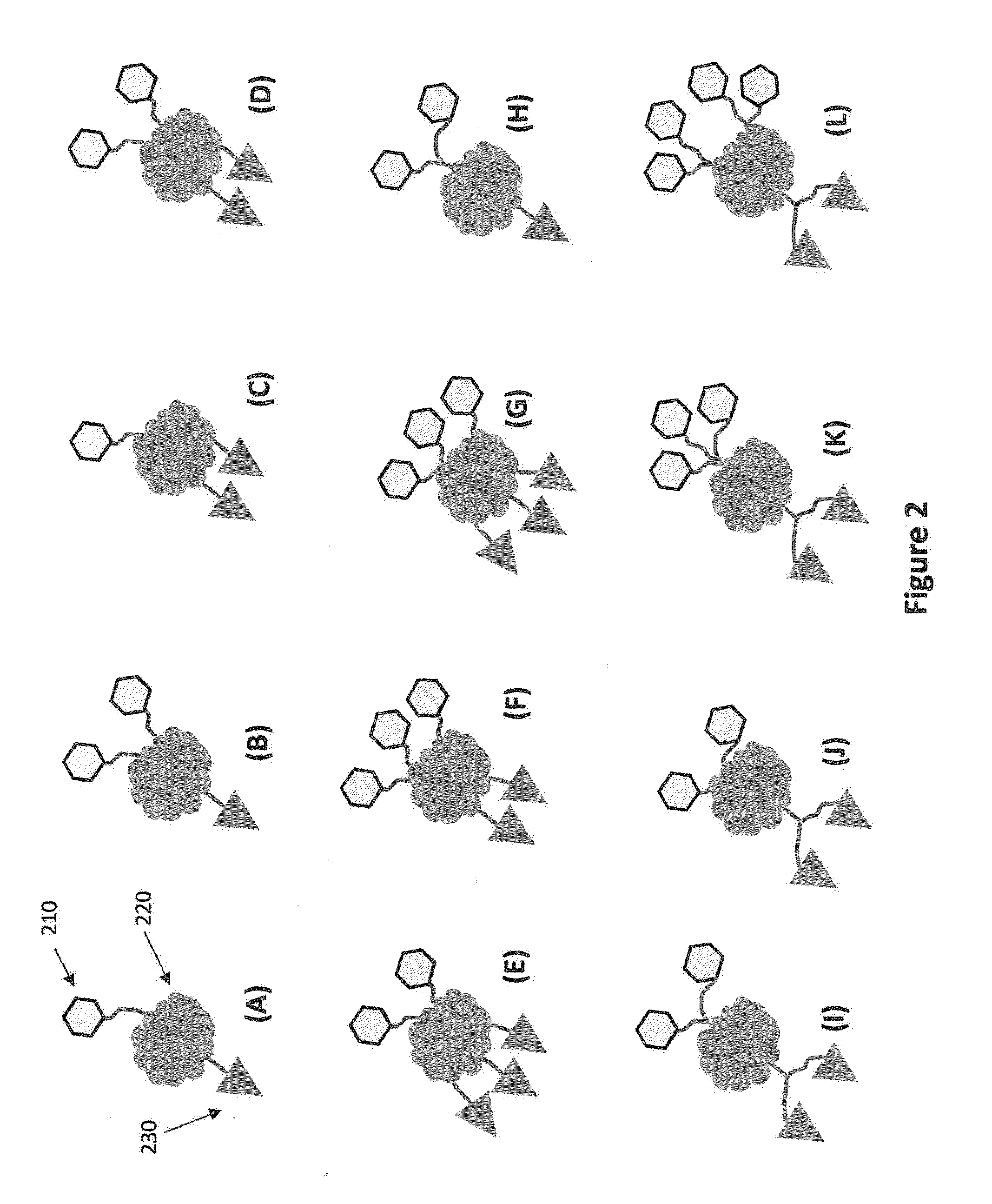Polymerase enzyme substrates with protein shield
a technology of polymerase enzymes and substrates, applied in the direction of transferases, instruments, peptide/protein ingredients, etc., can solve the problems of sequencing reaction compromise or end, time-consuming and extremely expensive methods,
- Summary
- Abstract
- Description
- Claims
- Application Information
AI Technical Summary
Benefits of technology
Problems solved by technology
Method used
Image
Examples
example 1
Sequencing with Nucleotide Analogs Using a Streptavidin Protein Shield
[0265]FIG. 32 shows a type of streptavidin structures that can be used to increase photostability of a nucleic acid sequencing reaction. The central portion of the analog is the tetrameric streptavidin protein. A dye is attached through a linker molecule having two biotin sites that are designed such that each of the biotins can attach to one binding site on a single streptavidin. To the other two sites on the streptavidin are attached nucleotides (nucleoside phosphates, Pn-NS) that are attached to the streptavidin through their phosphate groups (Pn). In the version shown in FIG. 32, two nucleotides are attached at each of the two biotin binding sites resulting in four nucleoside phosphates per streptavidin. Analogous constructs can be made having 2, 3, 4, or more dyes attached to a the linker molecule having two biotins. The number of nucleotides can also be varied by having 1, 2, 3, 4 or more nucleotides bound t...
example 2
Streptavidin Constructs
[0268]The following streptavidin constructs have been cloned for use as protein shields:
[0269]
pET11a.Core_Streptavidin.copET11a.CTerm_His6co.Core_Streptavidin.copET11a.Core_Streptavidin.N23A_S27D_S45A.copET11a.Core_Streptavidin.N23A_S27D_S45A_N49C.copET11a.Core_Streptavidin.N23A_S27D_S45A_S139C.copET11a.Core_Streptavidin.N49C.copET11a.Core_Streptavidin.S139C.co
example 3
Top7 Constructs
[0270]The following mutants have been cloned:
[0271]
pET11a.TOP7.co.His6copET11a.TOP7.K15R_K31R_K41R_K42R_K46R_K57R_K58R_K62R_K69R_110.1C.co.His6copET11a.BtagV07co.TOP7.100.1C.co.His6co
[0272]The first three mutants have been purified, and found to express well. The second construct knocks out all the lysines except for the N-terminus, and introduces a unique cysteine. This second construct generates a scaffold which can be attached to one dye and one base, with the two attachment points ˜30 Angstroms apart. The third construct allows multiple attachment points through lysine (e.g. for bases) and a unique cysteine through which to couple a dye. Alternately, because it contains a B-tag, this construct can also be combined with the streptavidin experiments. For example using biotin tagged dye+lysine targeted base tagged top 7, one could obtain streptavidin tetramers where some of the monomers were associated with dye, and other monomers with top7 / base.
PUM
| Property | Measurement | Unit |
|---|---|---|
| distance | aaaaa | aaaaa |
| molecular mass | aaaaa | aaaaa |
| molecular mass | aaaaa | aaaaa |
Abstract
Description
Claims
Application Information
 Login to View More
Login to View More - R&D
- Intellectual Property
- Life Sciences
- Materials
- Tech Scout
- Unparalleled Data Quality
- Higher Quality Content
- 60% Fewer Hallucinations
Browse by: Latest US Patents, China's latest patents, Technical Efficacy Thesaurus, Application Domain, Technology Topic, Popular Technical Reports.
© 2025 PatSnap. All rights reserved.Legal|Privacy policy|Modern Slavery Act Transparency Statement|Sitemap|About US| Contact US: help@patsnap.com



